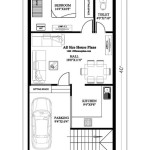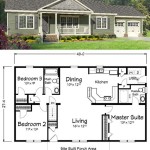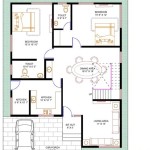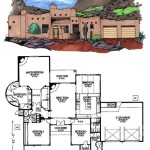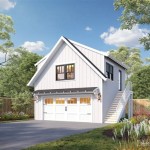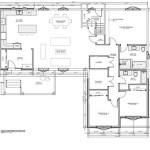Passive Solar Home Design Plans
Passive solar home design plans offer a sustainable and energy-efficient approach to creating comfortable and environmentally friendly living spaces. By harnessing the natural power of the sun, these plans can drastically reduce energy consumption while enhancing indoor comfort and aesthetics.
Principles of Passive Solar Design
Passive solar design utilizes five key principles to optimize solar gain and minimize heat loss:
- Orientation: Position the home to maximize southern exposure, allowing direct sunlight to penetrate interior spaces.
- Windows and Glazing: Use large, south-facing windows to capture solar heat, while limiting windows on the north side to minimize heat loss.
- Thermal Mass: Incorporate materials such as concrete, brick, or stone that absorb and retain solar heat, releasing it gradually at night.
- Insulation and Airtightness: Minimize heat loss through walls, ceilings, and floors by using high-performance insulation and sealing air leaks.
- Natural Ventilation: Utilize passive cooling strategies such as cross-ventilation or thermal chimneys to circulate fresh air and remove excess heat during warm seasons.
Benefits of Passive Solar Homes
Adopting passive solar design plans offers numerous advantages, including:
- Energy Efficiency: By reducing the need for artificial heating and cooling, passive solar homes can significantly lower energy bills.
- Enhanced Comfort: Natural sunlight and warmth create a cozy and inviting living environment, promoting well-being and productivity.
- Environmental Sustainability: By reducing energy consumption, passive solar homes contribute to a greener future by lowering carbon emissions.
- Increased Resale Value: Energy-efficient homes are highly desirable in the real estate market, fetching higher resale values.
Considerations for Passive Solar Design
When designing a passive solar home, it is crucial to consider:
- Climate and Location: The effectiveness of passive solar design depends on the local climate and solar resources.
- Building Materials: Choose materials with appropriate thermal properties to optimize solar gain and minimize heat loss.
- Surrounding Environment: Trees or nearby buildings can block sunlight, affecting the home's solar performance.
- Budget: Passive solar design may require additional upfront investment but offers long-term savings on energy costs.
Conclusion
Passive solar home design plans provide an innovative and sustainable solution for creating energy-efficient and comfortable living spaces. By harnessing the natural power of the sun, these plans not only reduce energy consumption but also enhance comfort, contribute to environmental sustainability, and increase the home's value. By carefully considering the principles and considerations outlined above, homeowners can reap the benefits of passive solar design for years to come.

Passive Solar House Plan 2 Bedrms Baths 1418 Sq Ft 146 2710

Passive Solar Home Plan At Alternative Heating Com House Design Homes Plans

Passive Solar House Plans Version 3 Byexample Com

Great Floor Plan For Solar Passive Home In Google Search House Plans Narrow

Passive Solar House Design Ecoliv

Passive Solar House Design

Solar Adobe House Plan 1870

Passive Design Green Home Technology Center

Ranch House Plans For A Passive Solar 1 Bedroom Home

Modern Passive House Solar Design 3 Bed Stylish Home Plan

